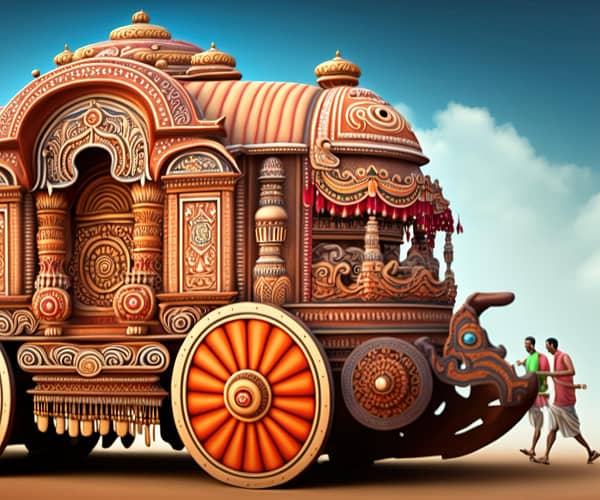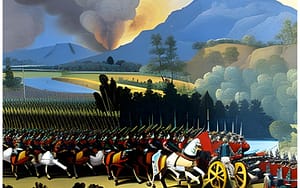
Historical Significance
Historical Background of Kanyakumari
The history of Kanyakumari can be traced back to ancient times. The region was mentioned in various ancient texts and scriptures, such as the Mahabharata and the Ramayana, which are important epics in Hindu mythology. According to legend, Kanyakumari is named after the Hindu goddess Kanya Kumari, an incarnation of the goddess Parvati, who performed penance at the site to attain Lord Shiva’s hand in marriage.
Over the centuries, Kanyakumari was ruled by various dynasties and empires. The region witnessed the dominance of the Cholas, the Pandyas, and the Cheras, who were prominent South Indian dynasties. The area was also influenced by the early Tamil kingdoms and the medieval Vijayanagara Empire.
Where it Began
Early Settlements in Kanyakumari
During the Iron Age, Kanyakumari came under the influence of the early Tamil kingdoms. The area was known as Nanjil Nadu, and it formed a part of the Pandyan kingdom, one of the prominent South Indian dynasties. The Pandyan rulers established trade links with ancient Greece, Rome, and other civilizations, making Kanyakumari an important maritime trading center.
The region’s strategic location also attracted the attention of foreign powers. The Roman Empire, for instance, established trade contacts with the Pandyan kingdom, and Roman coins and artifacts have been found in Kanyakumari. The area’s prominence as a trading hub continued during the medieval period, with Arab traders and merchants frequenting the region’s ports.
In the 8th century, Kanyakumari came under the rule of the Chola dynasty, another powerful South Indian dynasty. The Cholas further developed the region’s trade and infrastructure, leaving their architectural imprint in the form of temples and inscriptions.
Influence of Cholas and Pandyas
The Cholas and the Pandyas were two prominent South Indian dynasties that exerted a significant influence on the region of Kanyakumari during their respective periods of power.
The Pandyas were one of the early Tamil kingdoms and played a crucial role in shaping the history of Kanyakumari. They established their kingdom in the southern parts of Tamil Nadu, with their capital at Madurai. The Pandyas were known for their patronage of arts, literature, and trade.
Under the rule of the Pandyas, Kanyakumari flourished as a vibrant trading center. The region’s coastal location and well-established sea routes facilitated maritime trade with ancient civilizations, including the Roman Empire. The Pandyas maintained a strong naval presence and developed the infrastructure necessary for trade, such as ports and marketplaces.
The Pandyas also left a lasting architectural legacy in Kanyakumari. They constructed numerous temples, palaces, and other structures, many of which still stand today as testament to their artistic and architectural prowess. These include the Meenakshi Amman Temple in Madurai, which is renowned for its grandeur and intricate sculptures.
The Cholas, another powerful dynasty in South India, extended their influence over Kanyakumari after the decline of the Pandyas. The Cholas, known for their military might and administrative efficiency, brought a period of political stability and economic prosperity to the region.
Under Chola rule, Kanyakumari continued to thrive as a center of maritime trade. The Cholas expanded their naval power and controlled important trade routes, enabling the region to flourish commercially. They built harbors and improved infrastructure to support the growing trade activities.
The Arrival of the Portuguese
The Portuguese initially arrived in India seeking to establish trade routes and control over the lucrative spice trade. They set up trading posts along the Indian coast, including in Kanyakumari. Their main objective was to gain a monopoly over the spice trade, particularly the valuable pepper that was abundant in the region.
The Portuguese established a fort and a trading center in Kanyakumari to facilitate their commercial activities. They took advantage of the strategic coastal location of Kanyakumari, using it as a base for their maritime operations and to maintain control over the trade routes in the Arabian Sea.
The Portuguese rule in Kanyakumari was not without resistance. The local rulers, including the Venad dynasty of Travancore, opposed the Portuguese attempts to monopolize trade and spread their religious influence. There were conflicts and battles between the Portuguese and the local rulers, resulting in a power struggle for control over Kanyakumari.
Eventually, the Portuguese influence in Kanyakumari started to wane. The Dutch and the British emerged as stronger contenders in the region, challenging Portuguese dominance. In the 17th century, the Dutch took control of Kanyakumari briefly before being ousted by the British.
The arrival of the Portuguese in Kanyakumari not only impacted the region’s trade and economy but also left a lasting impact on its religious and cultural fabric. It marked the beginning of European colonialism in the area and set the stage for subsequent European powers to establish their presence and influence in Kanyakumari and the wider Indian subcontinent.
Dynasty of Travancore rule
The rule of the Travancore dynasty in Kanyakumari began in the 18th century when Marthanda Varma, the Maharaja of Travancore, successfully expanded his kingdom’s boundaries. He defeated the local rulers and annexed Kanyakumari, bringing it under Travancore’s control.
Under the Travancore rule, Kanyakumari experienced a period of stability and development. The Maharajas of Travancore implemented administrative reforms, improved infrastructure, and promoted economic growth in the region. They focused on enhancing agriculture, trade, and education, which resulted in the overall progress of Kanyakumari.
One of the notable contributions of the Travancore rulers was the construction of the Padmanabhapuram Palace, located near Kanyakumari. This magnificent palace served as the official residence of the Travancore kings and showcases the architectural grandeur of the era.
The Travancore rulers also patronized art, literature, and culture. They supported the growth of classical dance forms like Kathakali and promoted traditional music and performing arts. The region witnessed a flourishing cultural scene under their patronage.
The rule of the Travancore dynasty in Kanyakumari lasted until India’s independence in 1947. After independence, the princely state of Travancore merged with other territories to form the state of Kerala. Kanyakumari became part of the newly formed state and continued to thrive under the democratic governance of India.
Formation of Kanyakumari District
In 1956, as part of the States Reorganization Act, the states in India were reorganized based on linguistic and administrative considerations. This act aimed to create states that were linguistically and culturally cohesive.
During this reorganization, Kanyakumari, which was predominantly Tamil-speaking, was transferred from the state of Travancore-Cochin to the newly formed state of Madras (now Tamil Nadu) based on linguistic considerations. This decision was made to align the region with the Tamil-speaking majority in the state.
Subsequently, Kanyakumari district was carved out as a separate administrative unit within Tamil Nadu. The district was officially formed on November 1, 1956, with Nagercoil designated as its headquarters.
The formation of Kanyakumari district brought administrative autonomy and focused development to the region. It enabled the local administration to address the specific needs and aspirations of the people of Kanyakumari.
Over the years, Kanyakumari district has witnessed steady growth and development in various sectors. It is known for its scenic beauty, historical landmarks, religious sites, and vibrant cultural heritage. The district attracts a large number of tourists, both domestic and international, who come to explore its natural and cultural treasures.
The formation of Kanyakumari district as part of Tamil Nadu has solidified its integration into the state and strengthened the administrative and governance framework for the region. Today, Kanyakumari district continues to thrive as a distinct administrative unit, contributing to the overall progress and development of Tamil Nadu.







Where the three seas merge, where nature paints her finest hues, lies Kanyakumari, a land of mystic beauty and divine grace
I Love Kanyakumari
Founder

History of Ancient Kanyakumari

Uncovering the Untold Stories of the Battle of Colachel
The Battle of Colachel is a significant event in the history of South India that often goes unnoticed in mainstream historical accounts. This article aims

